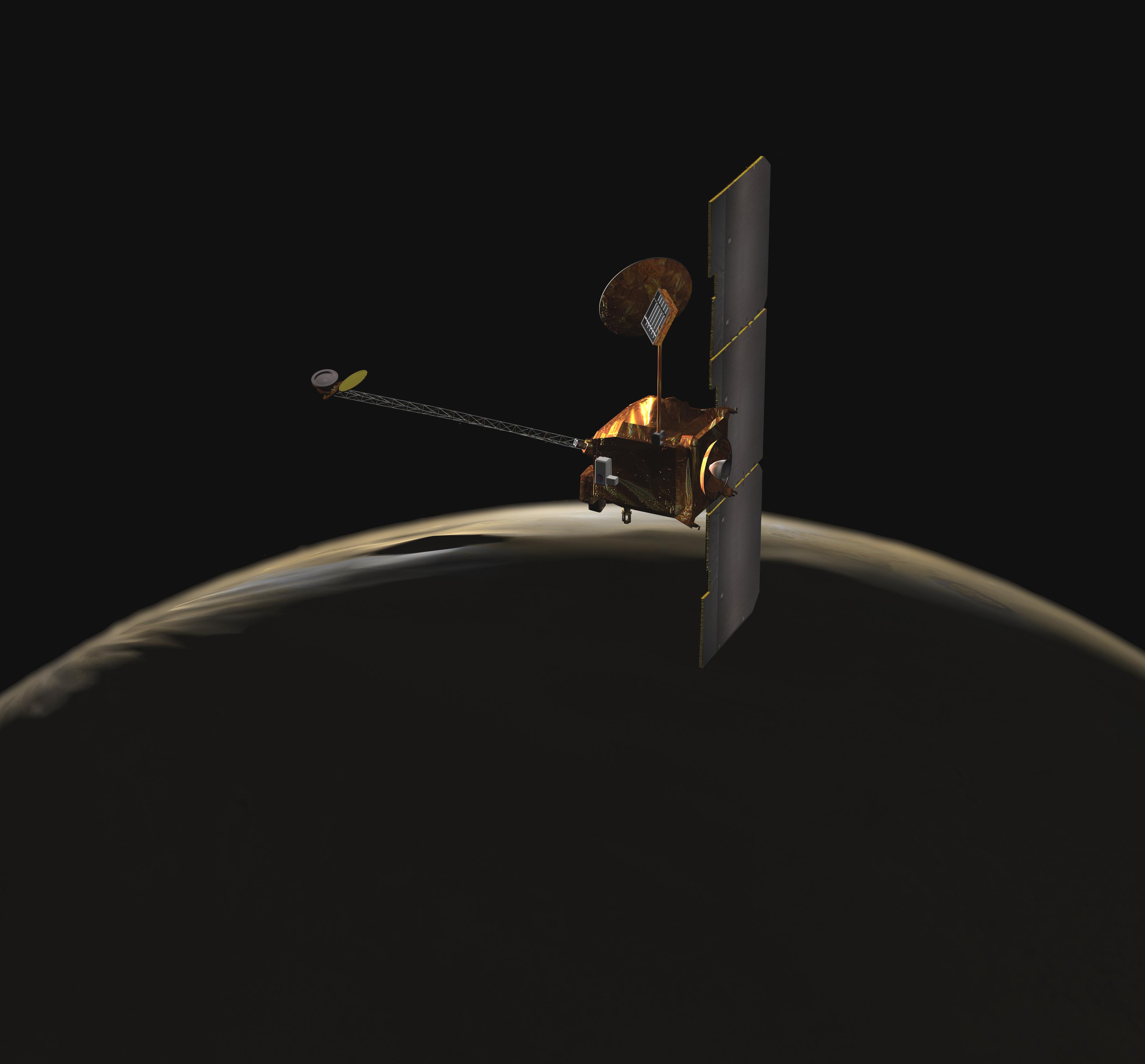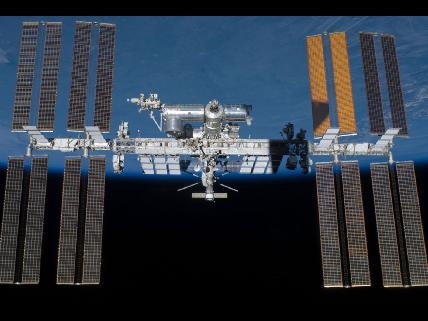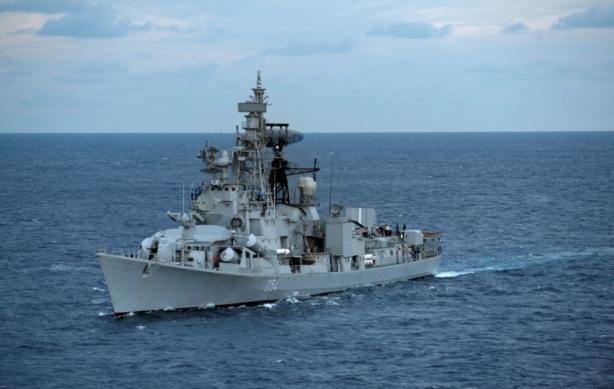
An artistic illustration of Odyssey orbiting Mars. A NASA image
WASHINGTON (PTI): NASA's Mars Odyssey spacecraft will reach a major milestone on Tuesday, when it completes its 60,000th orbit since arriving at the Red Planet in 2001.
Odyssey, which has discovered widespread water ice just beneath the surface of Mars, began orbiting the planet almost 14 years ago, on October 23, 2001.
On December 15, 2010, it became the longest-operating spacecraft ever sent to Mars, and continues to hold that record today.
"This orbital milestone is an opportunity to celebrate Odyssey's many achievements," said Jim Green, NASA's director of Planetary Science.
"Odyssey will continue to help lay a foundation for the first humans to Mars in the 2030s through NASA's Journey to Mars initiative," Green said.
Odyssey's major discoveries began in the early months of its two-year primary mission, with gamma-ray and neutron measurements that indicated plentiful water ice just beneath the surface at high latitudes on Mars.
The spacecraft's unexpectedly long service has enabled achievements such as completion of the highest-resolution global map of Mars and observation of seasonal and year-to-year changes, such as freezing and thawing of carbon dioxide, scientists said.
Odyssey currently is completing an adjustment to an orbit that will position it to pass over Martian terrain lit by early-morning sunlight rather than afternoon light. In its current orbit, the spacecraft always flies near each pole and along what is called the terminator.
The terminator is a "line" encircling Mars that passes through any point on the planet's surface at sunrise and again at sunset, separating the portion of Mars lit by the Sun from the portion experiencing darkness, dividing day and night.
The position of this line varies by time of day and time of year.
"Upcoming observations will focus on what is happening in the Martian atmosphere in the morning, such as clouds, hazes and fogs, and on frosts on the surface that burn off by later in the day," said Jeffrey Plaut, Odyssey project scientist at JPL.
As a communications relay for NASA's Mars rovers, Odyssey has transmitted to Earth more than 90 per cent of the data received from the Opportunity rover.
Future plans for Odyssey include relay duty for NASA and European Space Agency landers arriving on Mars in 2016.
Odyssey launched on April 7, 2001 from Cape Canaveral Air Force Station, Florida.
 Previous Article
Previous Article Next Article
Next Article













The Indian Air Force, in its flight trials evaluation report submitted before the Defence Ministry l..
view articleAn insight into the Medium Multi-Role Combat Aircraft competition...
view articleSky enthusiasts can now spot the International Space Station (ISS) commanded by Indian-American astr..
view article